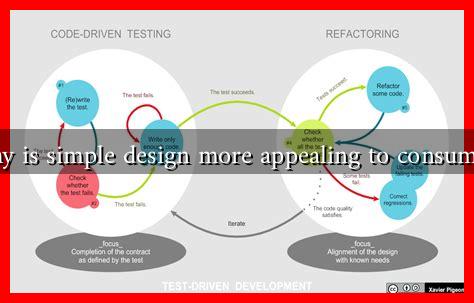-
Table of Contents
Why is Simple Design More Appealing to Consumers?
In an age where consumers are bombarded with information and choices, the principle of simplicity in design has emerged as a powerful tool for brands seeking to capture attention and foster loyalty. Simple design is not just a trend; it is a fundamental shift in how products and services are presented to consumers. This article explores the reasons behind the appeal of simple design, supported by examples, case studies, and statistics.
The Psychology of Simplicity
At the core of simple design’s appeal lies human psychology. Research indicates that people are naturally drawn to simplicity due to cognitive ease. When designs are straightforward, they require less mental effort to process, making them more attractive. According to a study published in the journal *Cognitive Science*, simpler designs are often perceived as more beautiful and are more likely to be remembered.
Key Benefits of Simple Design
Simple design offers several advantages that resonate with consumers:
- Clarity: A simple design communicates messages more effectively. For instance, Apple’s minimalist product design allows users to focus on functionality without distractions.
- Usability: Simple designs enhance user experience. Websites with clean layouts and intuitive navigation, like Google, tend to have lower bounce rates and higher engagement.
- Brand Recognition: Brands that embrace simplicity often achieve stronger recognition. The Nike swoosh is a prime example of how a simple logo can become iconic.
- Emotional Connection: Simple designs can evoke emotions more effectively. Brands like Coca-Cola use straightforward visuals to create a sense of nostalgia and happiness.
Case Studies: Brands That Embrace Simplicity
Several brands have successfully leveraged simple design to enhance their appeal:
- Apple: Known for its clean lines and minimalist aesthetics, Apple’s product design emphasizes functionality and user-friendliness. The iPhone’s interface is a testament to how simplicity can lead to widespread adoption.
- Airbnb: The Airbnb website features a simple, user-friendly interface that allows users to easily search for accommodations. This straightforward design has contributed to its rapid growth in the hospitality industry.
- Dropbox: Dropbox’s landing page is a prime example of effective simplicity. With a clear call to action and minimal text, users can quickly understand the service offered.
Statistics Supporting Simple Design
Numerous studies highlight the effectiveness of simple design:
- A study by the Nielsen Norman Group found that users prefer simple designs, with 94% of first impressions being design-related.
- According to Adobe, 38% of people will stop engaging with a website if the content or layout is unattractive.
- Research from the Design Management Institute shows that design-driven companies outperform the S&P 500 by 228% over ten years.
The Role of Technology in Simple Design
Advancements in technology have made it easier for brands to adopt simple design principles. Responsive design, for instance, allows websites to adapt to various screen sizes, ensuring a consistent user experience across devices. Tools like Figma and Sketch enable designers to create clean, user-friendly interfaces efficiently.
Conclusion: The Future of Simple Design
As consumer preferences continue to evolve, the demand for simple design will likely grow. Brands that prioritize clarity, usability, and emotional connection will stand out in a crowded marketplace. The evidence is clear: simple design is not just aesthetically pleasing; it is a strategic advantage that can lead to increased consumer engagement and loyalty.
In summary, the appeal of simple design lies in its ability to resonate with consumers on multiple levels—psychologically, emotionally, and functionally. As we move forward, embracing simplicity in design will be crucial for brands aiming to thrive in an increasingly complex world.
For more insights on design principles, you can visit Nielsen Norman Group.


